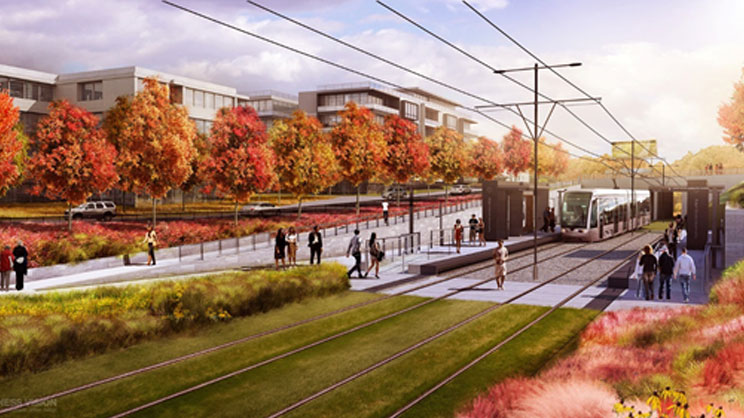
Source: Atlanta BeltLine
| Location | Atlanta, Georgia |
|---|---|
| Project Sponsor / Borrower | Atlanta BeltLine Inc. |
| Program Areas | |
| Value Capture Techniques | Tax Increment Financing |
| Mode | Pedestrian / Bicycle / Light Rail Transit |
| Description | The Atlanta BeltLine is a comprehensive transportation and economic development effort and one of the nation's largest urban redevelopment programs. By transforming Atlanta's mostly abandoned freight rail corridors, the completed BeltLine will ultimately include at least a 33-mile trail network and about 22-miles of transit. The project is projected to generate $10 billion in total economic growth within the City of Atlanta, much of which will support ongoing project costs through a Tax Allocation District (TAD) (Georgia's state term for tax increment financing [TIF]). When the TAD was created in 2005, properties around the proposed BeltLine generated limited tax revenue. To spur economic development, the City of Atlanta, Fulton County, and Atlanta Public Schools agreed to create a TAD on parcels surrounding this BeltLine's rail corridor. As investment increases around the BeltLine, this TAD generates tax revenue to support ongoing project delivery. From 2005 to 2017, the Atlanta BeltLine TAD has generated $325 million. Alongside TAD revenue, the City of Atlanta, private investment and philanthropic contributions, county, regional, state and federal grants, and public-private partnerships are also funding the completion of the BeltLine. Ballot referenda in 2016 allocated nine-tenths of a penny for transit and transportation projects within the City of Atlanta, a portion of which will fund some BeltLine transit, access, and the remaining right-of-way for the entirety of the 22-mile loop. The full trail network and transit system is currently planned to be completed by 2030 and will ultimately connect 45 neighborhoods in Atlanta. |
| Cost | $4.8 billion (approximately $500 million spent through FY2017) |
| Funding Sources | Bonds - $143 million City of Atlanta - $85 million Private Philanthropic Grants - $42 million Other Governmental Grants - $43 million City of Atlanta (TAD) - $48 million Atlanta Public Schools (TAD, net) - $80 million Fulton County (TAD, net) - $51 million Other Income - $8 million |
| Project Delivery / Contract Method | Design-bid-build and Design-build |
| Private Partner | Private Donors:
|
| Project Advisors / Consultants | Astra Grading & Pipe Reeves Contracting Co Kimley Horn & Associates Perkins & Will, Inc. Marta HDR Engineering Path Foundation Trees Atlanta AECOM Jacobs Engineering Mott MacDonald ValleyCrest Land Development Amec E&I, Inc. Wood + Partners, Inc. WSP |
| Lenders | SunTrust Bank, N.A., Bank of America, N.A, Wells Fargo Bank, N.A |
| Duration / Status | As of 2017, 11 miles of the Atlanta BeltLine's paved trail network have been completed, 1 mile of interim trail is in place, 307 acres of parkland have been opened, and 396 acres of brownfields have been remediated. As of spring 2018
|
| Financial Status/Financial Performance | From 2005-2017, the TAD generated $325 million and has generated a direct economic impact of $4.1 billion in private development as of the end of 2017. This is eight times greater than the total public/private investment of $500 million to date. Most recent projections forecast that the TAD will generate $800 million - $1.4 billion from 2012 to its conclusion in 2030. |
| Innovations |
|
| Related Links / Articles | |
| Contacts | Jenny Odom |